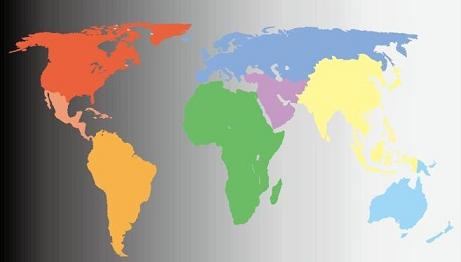Independence — Interdependence — Dependence Theory of International Trade tries to read trade patterns and policies of countries based on their degree of independence or dependence or interdependence on rest of the world. See this is a continuum: Independence — Interdependence — Dependence. The polar extremes are Independence at one pole and Dependence at the other. Independence stops trade, while dependence boosts trade. Independence: Independence is being self-reliant. Well one cannot be self-reliant. Yet one country may choose to be independent and the cost of such obstinacy is self-denial of life’s luxuries, comforts and necessities that can be afforded without difficulty. It may be a government policy to remain independent. This austerity could cost the country heavily. Hence governments plan independence sans difficulty for citizens. Few countries in the world maintain a vast reserve of essential minerals and even don’t touch own oil fields, so that in future if foreignContinue reading
International Business Management
International Trade Theory of Country Size and Technology Gap
Trade Theory of Country Size Country size has some definite relation to international trade as to what is traded, how much is traded and so on. The classical trade theories do not go into country-by-country differences in size to deal with the lines of specialization. When a small and big country are involved, the small country may be pushed into specialization, but not the big one for all its need for the other product can’t be produced by the other small country, nor that small country take all export surplus of the big nation resulting from specialization. Thus a nexus exists between global trade and country size. Vastness of Country size and Variety of Resources go together: Size of a country is measured by the geographical space here. Big countries have vast space and hence more and diverse resources. With that they could be self reliant. Considering their size, theirContinue reading
Control in Multinational Enterprises (MNEs)
There are various methods of classification of management control in Multinational Enterprises (MNEs). By levels of control here it is meant whether the parent / corporate level managers or subsidiary/country-level managers are involved. The former might be called higher level and the later lower level control. Depending on the sphere of focus we have two types of control called Strategic control and Operational control. In the MNE’s context, strategic control is the responsibility of parent and operational control is the preserve of the subsidiary. Another way puts ‘management control, tactical control and transactional control’ as the 3 levels of control respectively carried out by the corporate top management, collectively by corporate & subsidiary management and subsidiary management in the case of MNEs. Of course, whether an MNE’s structure is ethno-centric, geo-centric, multi-domestic/poly-centric or region-centric is another factor that influences the exact distribution of responsibility. The forward looking information is providedContinue reading
New Trade Theory of International Trade
New Trade Theory of International Trade takes a different approach from the Ricardian and the Heckscher-Ohlin models on why countries engage in international trade. Both Ricardo and Heckscher assumed constant returns to scale where to them if all factors of production are doubled then output will also double. But a firm or industry may have increasing returns to scale or economies of scale in way that when all factors of production are doubled, output more than doubles which will necessitate a bigger market and thus forcing firms to engage in international trade where there is a larger market. The New Trade Theorist noted that the bigger the size of a firm or industry the more the efficiency of its operations in that the the cost per unit of output falls as a firm or industry increases output. The increase in output must however be met with an increase in theContinue reading
Staffing for Global Operations
Staffing for global operations is quite a complex affair. It involves activities on a global basis, including candidate selection, assignment terms and documentation, relocation processing and vendor management, immigration processing, cultural and language orientation and training, compensation administration and payroll processing, tax administration, career planning and development, and handling of spouse and dependent matters. In global staffing, companies need to choose from various types of global staff members and need to have specific approaches and strategies to global staffing. Global staff members are selected from among three different types: expatriates, host-country people and third-country nationals. Expatriate is a person who belongs to the country in which the organization is headquartered and not a citizen of the country in which the company operates. A host-country national is a citizen of the country in which the subsidiary company is located. A third-country national is a citizen of a country, but works inContinue reading
International Asset Protection
Company’s investments and other assets in foreign countries may face the risk of expropriation. Governments are therefore concerned about the protection of the interests of their national companies in the foreign countries. The potential risk was more before the worldwide liberalization set in the 1980s. Important protective measures in this respect include the following: Coercion and Pressure Until the Second World War, home countries used military force and coercion to ensure that host governments would give foreign investors prompt, adequate, and effective compensation in cases of expropriation, under a concept known as the international standard of fair dealing. It may be noted that the home countries of the companies involved were developed ones and the host countries were developing nations and these host countries had little to say about this standard. In a two conference held at The Hague in 1930 and at Montevideo in 1933, participating developing countries gotContinue reading


